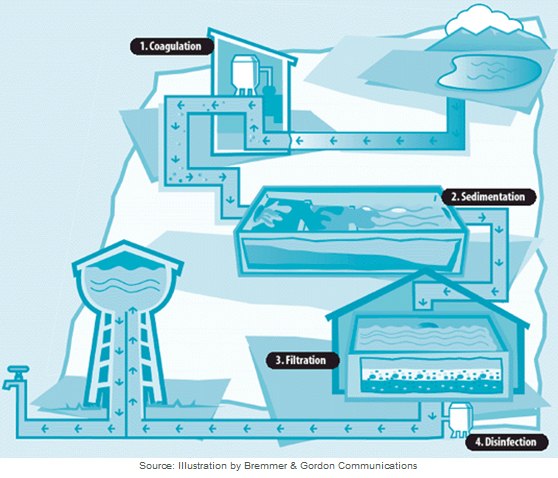#CleanWater: Brought to You by Chemistry
ACC celebrates #WorldWaterDay and the White House Water Summit by releasing a video highlighting the many ways chemistry keeps water flowing—from source to tap.
The United States enjoys one of the best supplies of drinking water in the world. Water utilities across the country have in place effective processes to remove contaminants that cause waterborne diseases. The most commonly used processes include coagulation and flocculation, sedimentation, filtration and disinfecton.
Coagulation/Flocculation/Sedimentation
The flocculation process coagulates (joins together) particles with alum and metal salts so that they settle out of the water as sediment. Sedimentation is simply a gravity process that removes flocculated particles from the water.
Filtration
Filtration removes remaining particles from the water supply. Those particles may include silt, natural organic matter, iron and manganese, and microorganisms. Filtration clarifies water and improves the effectiveness of disinfection.
Disinfection (Chlorination)
Following coagulation, flocculation, sedimentation and filtration, water is disinfected to ensure that dangerous microbes are killed. Chlorine-based disinfectants are most commonly used because they are very effective. Chlorine-based disinfectants also provide residual protection against biological contamination in the water distribution system. This is a critical step to assure our water is safe all the way to the consumer's tap.
